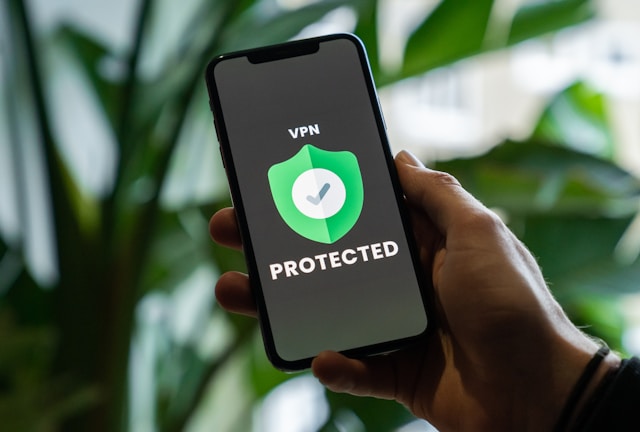Are you struggling to drive customers to your local store? Then, you can use the power of geolocation marketing to drive more foot traffic. You can achieve this by sending marketing messages to customers’ mobile devices in specific locations.
We’ll share what technologies allow location-based marketing to work. Furthermore, we will give an overview of the best practices so you can start with higher success levels. After all, you’ll want to optimize campaigns to generate as many sales as possible.

Table of Contents
What Is Geolocation in Marketing?
Geolocation marketing refers to the use of geographic data to tailor marketing efforts based on the customer’s physical location. This strategy leverages data from various sources, such as GPS, IP addresses, Wi-Fi networks, and mobile signals.
These technologies determine the precise location of a user’s device, which is important when learning about geolocation in marketing.
There are many advantages of using geolocation marketing, such as:
- Enhanced customer targeting: Geolocation allows businesses to target customers based on their exact location. This ensures that marketing messages reach relevant audiences. The power of better customer targeting features depends on the quality of the software you use. It’s all about pinpointing the correct location with a high degree of IP accuracy.
- Better customer experience: Your target audience will appreciate relevant marketing messages based on location. They may want to take advantage of these offers, especially if the store’s physical location is close to them.
- Higher foot traffic: Your store will get a higher level of foot traffic once you begin location-based marketing. That increases awareness and puts your store location on the map. However, you’ll need to provide good quality offers to ensure that you attract customers to your store.
- Higher return on investment (ROI): You’ll increase the ROI of your marketing campaigns with geo marketing. You’ll have higher conversion rates and avoid marketing to non-relevant users. However, you’ll need to figure out the location of your target audience to optimize location-based campaigns.
- Competitive advantage: Adding an element of geo marketing will give you an edge over your competitors. This is especially true if your competitors don’t use the technology to target mobile devices.

An Example of Geolocation Marketing
A good quality example of geolocation marketing is when grocery stores or restaurants send offers to local mobile devices. This makes sense because it’s only the locals who have an interest in visiting those stores.
Hence, it’s a waste of money to send such marketing offers to people outside of the immediate radius.
Another handy example is the sale of tickets to an event. This event can take place on the same day or later on in the week. Making people aware of local events can drive ticket sales through the roof and make it easier for marketing teams.

How Does Geomarketing Work?
Now, let’s look at the technologies that allow geomarketing to function. This will enable you to set the right expectations and understand the limitations of the marketing tool. Here are the top features of how does geomarketing work:
- Location data: Your marketing software must obtain location data to target users. You can do this through IP address, Wi-Fi, cellular data, and GPS. You can use tools that use IP geolocation APIs to provide location data.
- Mobile device: You’ll need to target users with mobile devices. You’ll track user location when they enter and exit specific areas, which allows you to track customer location data with sufficient accuracy.
- Marketing message: You’ll need to craft marketing messages to drive conversions. There are several strategies to adopt, such as referencing local events, weather, and landmarks. You can also research competitors to determine the best way to craft high-converting marketing messages.
- Geofencing: Use geofencing technology to create virtual boundaries around target locations. This gives you more control over the target location but requires a hands-on approach. That’s because you’ll need to manually set virtual boundaries.
- Data collection and optimization: Marketers need to collect data about the success of their geo-marketing campaigns. This allows you to figure out where to double down and spend more marketing dollars and where to cut your losses. Good quality marketing software will have the tools available to help you optimize marketing efforts.

3 Best Practices for Geolocation Mobile Marketing
You’ll need to adopt the best practices to increase the odds of success for your geolocation mobile marketing. This will help you make the most of your marketing spend and generate additional customers.
1. Use the Right Timing and Frequency
It’s vital to time your marketing messages correctly to ensure you get the biggest return on investment.
For example, you can send marketing messages as soon as they enter a specific location. This means they can immediately act upon the offer, which isn’t possible if they leave the area.
You should also consider the time of day. Restaurants may target breakfast, lunch, and dinner time slots for the best results. Ideally, your software will capture data to clue you in on the best time to send marketing messages.
Don’t send marketing messages too often since this can annoy your target audience. Instead, focus on relevant content that gives your audience a reason to visit.

2. Provide Quality Offers
Improving the quality of your promotional offers is one of the best ways to increase customer engagement. That’s because users love a good idea, and that’s what they expect from marketing messages. This is especially true in highly competitive areas where big discounts are the norm.
Therefore, you’ll need to spy on the competition to see what kind of offer they provide. Then you must match these offers or improve them to increase your local store foot traffic. Several creative ways exist to offer big discounts while keeping your costs down. Make sure to explore all possibilities with your location-based marketing.
3. Manage Your Budget
It’s vital to avoid spending too much money on your proximity marketing. However, spending not enough money will result in missed opportunities. Here are some suggestions for how you can manage your geo pricing:
- AI-based suggestions: Nowadays, marketing software offers AI-based suggestions that help you determine where to spend money. This is great if you need help figuring out the metrics. However, make sure that you trust the software to make the right recommendations.
- Spread your spending: It’s a good idea to spend marketing dollars on several geographic locations. This gives you a chance to uncover the places where most of your customers want to buy. This is easier when you have more money to spend on your marketing campaigns.
- Explore new areas: Experiment with marketing in new geographic regions to uncover new customers. This is ideal when you saturate your immediate location and need additional customers.

Geolocation Marketing: Is It Worth the Investment?
Yes, investing in geo-location marketing is money well spent if your business relies on local foot traffic. Make sure you take the time to experiment with different geographical locations to find customers. You’ll need to determine if the cost is worth the investment through data gathering.
However, you’ll need competitive software to execute the best geolocation marketing strategies. This ensures you receive accurate geolocation data that you can trust. Therefore, you can be confident about targeting your customers.
Are you unsure how to target your customer locations? Then, choose geoPlugin for IP geolocation and reverse IP geocoding technology. You’ll be able to accurately find customers in any location to power marketing campaigns.
What are you waiting for? Sign up today to check out geoPlugin for yourself.













